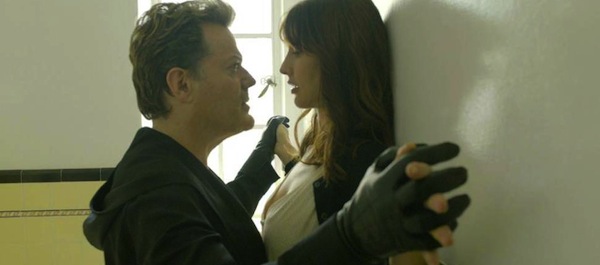Apply Now to Win a Panavision Grant! “The camera just kept going.”—Day Out of Days DP Denise Milford

Just eight days left until the LA Film Fest kicks off—and just nine days left to apply for Film Independent’s Panavision Grant! In celebration of both, we spoke to Denise Milford, cinematographer for Day Out of Days, the film by writer-director and Spirit Award Nominee Zoe Cassavetes which won the Panavision Grant in the spring of last year and will premiere in the Film Fest’s LA Muse section later this month. We talked to Milford about shooting in LA, the challenges facing women in the industry and working with the Alexa camera from the Panavision Grant.
“I think [LAFF] is the perfect venue for our film,” Milford said, “which was shot in LA and is all about the whole environment of being in the movie business here.” Day Out of Days depicts one day in the life of an aging film actress clinging to relevance in youth-obsessed Hollywood. Milford, a born-and-raised Angeleno, was thrilled to shoot in her hometown: “Our film definitely did [capture the spirit of LA] and utilized all these kind of quintessential LA locations, and other ones that aren’t so, which I think is really cool,” she said. “And the light here is so beautiful—you can just really work it,” she added.
Milford met Cassavetes about three years ago. “We got along famously well,” she recalled, “We were finishing each other’s sentences by our second day of meeting each other. I was thrilled at the idea of working with her.” Cassavetes assembled an overwhelmingly female team to make Day Out of Days: in addition to herself and Milford, she co-wrote the script with the film’s star, Alexia Landeau, and co-produced with Film Independent Fellows Kate Roughan (Producing Lab 2005) and Gina Kwon (Fast Track 2007). “We’re all very determined women,” Milford said of the crew. “We all were very much in sync. It made it almost effortless. The army of women!” She laughed. “It really was that. If anything came up, it was never, ‘No, we can’t do that.’ It was just, ‘We’ll find a solution.’ And we did, and we just forged ahead.”
The appalling gender bias in the film industry is no secret, and that goes for cinematographers, too: of all the DPs of the 250 highest-grossing films of 2014, only 5% were women. “There are definitely challenges out there for women in the field,” Milford admitted. “[People ask me], ‘oh, can you hold a camera? Are you strong enough?’ And what am I supposed to say? I mean, seriously! I don’t think, ‘oh gosh, I’m a woman, I can’t do that’—that’s just never been part of my vocabulary, truly. And to hear it can be quite shocking.”
“In my experience, honestly, I’ve always been chosen to do a job based on my talent and my ability, and it’s never been really an issue,” she said, “[though] I’m sure there are jobs that I have no idea about, or shoots that I was never considered for because of that, but I don’t know. Also, it isn’t a male vs. female thing. It’s not men that are all saying, ‘Oh, she can’t do it’—it goes both ways, and sometimes women can be just as repressive as men can. It’s a very insidious belief across genders”—which makes Day Out of Days that much more important, not just as a film made by women, but as a film about being a woman in the industry. “It’s a story that needs to be told, definitely,” Milford said, “in this industry and especially in this day and age.”
The shoot lasted about 23 days last spring, with some additional photography later in the year. “I wouldn’t say we breezed through it, but we kept on schedule,” Milford recalled—particularly impressive on a microbudget. “You get all hands on deck and it’s pretty amazing what you can accomplish.” She attributes some of the shoot’s success to the Film Independent Panavision Grant, which loans its winning filmmaker a camera package. Before getting the grant, Milford and Cassavetes were having no luck tracking down a camera in the middle of pilot season. “I honestly don’t think we could have done it without it,” she admitted. “I was very adamant about wanting to shoot it on the Alexa—I am a huge fan. It’s a total workhorse. Some of the days we shot, some of those over 100-degree heat wave days, the camera just kept going where other ones would have definitely overheated. The whole package was awesome.”
From this point, Milford just can’t wait for people to see the movie. “That’s the most important thing,” she said, “that they see it and they, hopefully, get a glimpse into this aspect of an actress of a certain age in this industry, and hopefully it will give them some insight. I just want people to see it! There’s a lot of love and hard work went into the film. It would just be nice if people got up there, and [it would] maybe change some people’s opinions.”
Mary Sollosi / Film Independent Blogger